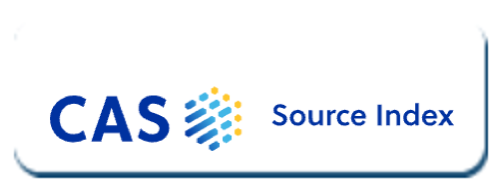A case of vitiligo developed after isotretinoin therapy
Keywords:
Isotretinoin, vitiligo, 13-cis retinoic acidAbstract
Oral isotretinoin, a 13-cis retinoic acid and a derivative of the retinoids, is very effective for severe nodulocystic acne and papulopustular acne, which at times turns scar-forming and resistant. Common mucocutaneous and ocular dryness are the side effects. Also, musculoskeletal symptoms such as back pain, arthralgia, and myalgia may be seen in about 16% of adults post-isotretinoin therapy, usually resolving after treatment discontinuation. Depressive side effects and suicidal thoughts are concerns voiced against its use. Vitiligo is an autoimmune disorder characterized by the selective loss of melanocytes and depigmented patches on the skin. Recently, it has been classified to include metabolic, oxidative stress, genetic, and environmental factors. We present a very rare case of vitiligo developing after systemic isotretinoin therapy in a 24-year-old female patient with severe nodulocystic acne. The patient responded well to topical treatment, and her lesions improved significantly during the five months of follow-up. This case points out that, when prescribing isotretinoin, dermatologists should consider all possible dermatological adverse effects, including vitiligo, and conduct timely intervention and monitoring.
References
Nast A, Dréno B, Bettoli V, Bukvic Mokos Z, Degitz K, Dressler C, et al. European evidence-based (S3) guideline for the treatment of acne - update 2016 - short version. J Eur Acad Dermatol Venereol. 2016;30(8):1261-8.
Vallerand IA, Lewinson RT, Farris MS, Sibley CD, Ramien ML, Bulloch AGM, et al. Efficacy and adverse events of oral isotretinoin for acne: a systematic review. Br J Dermatol. 2018 Jan;178(1):76-85.
Kaplan G, Haettich B. Rheumatological symptoms due to retinoids. Baillieres Clin Rheumatol. 1991;5(1):77-97.
Yilmaz Tasdelen O, Yurdakul FG, Duran S, Bodur H. Isotretinoin-induced arthritis mimicking both rheumatoid arthritis and axial spondyloarthritis. Int J Rheum Dis. 2015;18(4):466-9.
Oliveira JM, Sobreira G, Velosa J, Telles Correia D, Filipe P. Association of Isotretinoin With Depression and Suicide: A Review of Current Literature. J Cutan Med Surg. 2018;22(1):58-64.
Picardo M, Dell'Anna ML, Ezzedine K, Hamzavi I, Harris JE, Parsad D, et al. Vitiligo. Nat Rev Dis Primers. 2015;1:15011.
Ezzedine K, Lim HW, Suzuki T, Katayama I, Hamzavi I, Lan CC, et al. Revised classification/nomenclature of vitiligo and related issues: the Vitiligo Global Issues Consensus Conference. Pigment Cell Melanoma Res. 2012;25(3):E1-13.
Rao PK, Bhat RM, Nandakishore B, Dandakeri S, Martis J, Kamath GH. Safety and efficacy of low-dose isotretinoin in the treatment of moderate to severe acne vulgaris. Indian J Dermatol. 2014;59(3):316.
Avelar-Caggiano MFS, Castro CCS, Dellatorre G. Inflammatory segmental vitiligo during oral isotretinoin use: a casual association? An Bras Dermatol. 2020;95(3):399-400.
Kokandi AA. Vitiligo Appearing after Oral Isotretinoin Therapy for Acne. Case Rep Dermatol Med. 2018;2018:3697260.
O'Connor M, Silverberg JI, Silverberg NB. The Effect of Isotretinoin on Vitiligo and Autoimmune Comorbidity. J Drugs Dermatol. 2020;19(6):637-8.
Jean-Paul Ortonne. Vitiligo and other disorders of hypopigmentation. In:. Bolognia JL, Jorizzo JL, Rapini RP, editors. Dermatology. 1st edition. St. Louis: Mosby;2003:947-55
Baldea I, Costin GE, Shellman Y, Kechris K, Olteanu ED, Filip A, et al. Biphasic pro-melanogenic and pro-apoptotic effects of all-trans-retinoic acid (ATRA) on human melanocytes: time-course study. J Dermatol Sci. 2013;72(2):168-76.
Downloads
Published
How to Cite
Issue
Section
License
Copyright (c) 2024 Journal of Clinical Trials and Experimental Investigations

This work is licensed under a Creative Commons Attribution 4.0 International License.
![]() The journal is licensed under a Attribution4.0 International (CC BY 4.0).
The journal is licensed under a Attribution4.0 International (CC BY 4.0).







